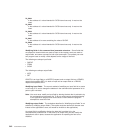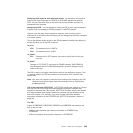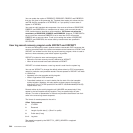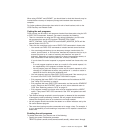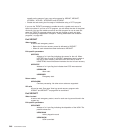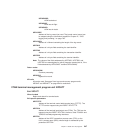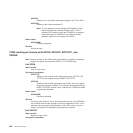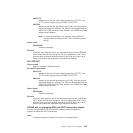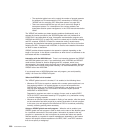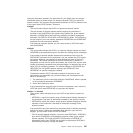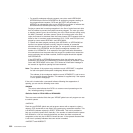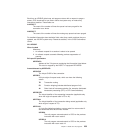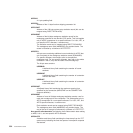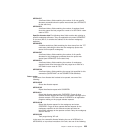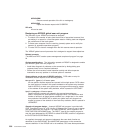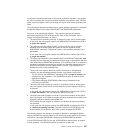v The equivalent global user exit to control the number of queued requests
for sessions on IP interconnectivity (IPIC) connections is XISQUE: see
“XISQUE exit for managing IPIC intersystem queues” on page 258.
v There are several methods that you can use to control the length of
intersystem queues. For a description of the various methods, see
Intersystem session queue management, in the CICS Intercommunication
Guide.
The XZIQUE exit enables you detect queuing problems (bottlenecks) early. It
extends the function provided by the XISCONA global user exit (introduced in
CICS/ESA 3.3 and described on page “Intersystem communication program exits
XISCONA and XISLCLQ” on page 138), which is invoked only for function shipping
and DPL requests. XZIQUE is invoked for transaction routing, asynchronous
processing, and distributed transaction processing requests, as well as for function
shipping and DPL. Compared with XISCONA, it receives more detailed information
on which to base its decisions.
XZIQUE enables allocate requests to be queued or rejected, depending on the
length of the queue. It also allows a connection on which there is a bottleneck to be
terminated and then re-established.
Interaction with the XISCONA exit: There is no interaction between the XZIQUE
and XISCONA global user exits. If you enable both exits, XISCONA and XZIQUE
could both be invoked for function shipping and DPL requests, which is not
recommended. You should ensure that only one of these exits is enabled. Because
of it provides more function and greater flexibility, it is recommended that you use
XZIQUE rather than XISCONA.
If you already have an XISCONA global user exit program, you could possibly
modify it for use at the XZIQUE exit point.
When the XZIQUE exit is invoked:
The XZIQUE global user exit is invoked, if it is enabled, at the following times:
v Whenever CICS tries to acquire a session with a remote system and there is no
free session available. It is invoked whether or not you have specified the
QUEUELIMIT option on the CONNECTION definition, and whether or not the
limit has been exceeded. It is not invoked if the allocate request specifies
NOQUEUE or NOSUSPEND.
Requests for sessions can arise in a number of ways, such as explicit EXEC
CICS ALLOCATE commands issued by DTP programs, or by transaction routing
or function shipping requests.
v Whenever an allocate request succeeds in finding a free session, after the queue
on the connection has been purged by a previous invocation of the exit program.
In this case, your exit program can indicate that CICS is to continue processing
normally, resuming queuing when necessary.
Using an XZIQUE global user exit program: When the exit is enabled, your
XZIQUE global user exit program is able to check on the state of the allocate queue
for a particular connection in the local system. Information is passed to the exit
program in a parameter list, that is structured to provide data about non-specific
allocate requests, or requests for specific modegroups, depending on the session
request. Non-specific allocate requests are for MRO, LU6.1, and APPC sessions
that do not specify a modegroup.
250 Customization Guide



